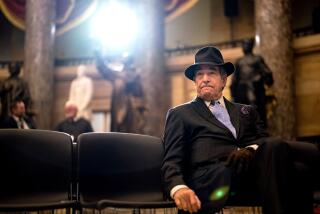Oscar Pistorius used maximum-damage bullets, expert testifies

Los Angeles Times Johannesburg bureau chief Robyn Dixon gives video journalist Ann Simmons an update on developments in the trial of Oscar Pistorius, the amputee Olympian accused of murdering his girlfriend.
- Share via
PRETORIA, South Africa — Athlete Oscar Pistorius used expanding bullets that mushroom on impact and cause maximum tissue damage when he shot his girlfriend to death, a pathologist testified Monday in a South African court.
One of those bullets penetrated Reeva Steenkamp’s head and broke up in her brain, causing a catastrophic injury, and another hit her right hip, shattered a hip bone and broke into small pieces in her body, said pathologist Gert Saayman, who conducted the autopsy. A third bullet hit her arm, shattering the bone.
Saayman testified that Pistorius fired Winchester Ranger bullets of the same basic design as Black Talon rounds. The latter are controversial because they produce jagged metal talons as they travel through the target’s body, raking through organs and maximizing injury and blood loss. Winchester announced in 1993 it was withdrawing Black Talon bullets from sale after public outcry over their use in two high-profile mass shootings.
Saayman said that even without the head injury, it would have been extremely difficult for a person to survive the other two wounds, due to blood loss and infection.
Pistorius is accused of premeditated murder in the killing of Steenkamp, 29, in the early hours of Valentine’s Day last year. Prosecutors allege that he shot her intentionally after she locked herself in a toilet off the bathroom; he contends that he mistook her for a burglar and that the killing was accidental. Pistorius fired four shots.
By all appearances, Monday was a harrowing day for Pistorius. During a court break early on, he was hunched over and deeply upset, with his sister, Aimee, and brother, Carl, hugging him.
During the pathologist’s testimony, the double amputee Olympic runner bent over in his seat and retched violently. At one point, a court official moved the microphone near Pistorius’ seat in the dock so the sounds would be less audible.
Defense attorney Barry Roux told the court that the athlete was extremely upset and that his emotional state would not improve as the evidence continued to be presented.
Saayman said that South African forensic pathologists deal with gunshot injuries often and that he was familiar with expanding bullets and the damage they cause.
He testified that Steenkamp also had an abrasion in the middle of her back that could have been caused by impact with a hard object or by a bullet that had spent its force and struck the area without penetrating. He also detailed abrasions on her chest, which he said may have been caused by a bullet that had lost energy and grazed her body without entering.
He said that the hip injury would have made it difficult for Steenkamp to remain standing and that the injury to her arm would have made it impossible to use the limb. Steenkamp would have immediately have lost consciousness after the shot to her head, he said.
Judge Thokozile Masipa banned the live broadcast, tweeting or blogging of Saayman’s testimony after a motion from the prosecution — supported by the defense — arguing that the evidence was so graphic that it would harm the Steenkamp family and other people listening, potentially including children.
Masipa’s ruling on tweeting from the courtroom was controversial, with some legal and media experts saying it was out of line with previous South African trials in which evidence from postmortem examinations was read to the court and reported by journalists via Twitter.
“Is this trial different because Oscar is famous and rich?” tweeted Pierre de Vos, a constitutional law expert at the University of Cape Town. “All accused (and families of victims) should be treated the same,” he said in another tweet.
Earlier, Roux cross-examined a security guard, Pieter J. Baba, who said Friday that he called Pistorius after the shooting and that the athlete told him, “Security, everything is fine.”
Roux produced two sets of phone records indicating it was Pistorius who called the security guard, not the other way around. Baba, however, stood by his testimony that he called Pistorius first.
More to Read
Sign up for Essential California
The most important California stories and recommendations in your inbox every morning.
You may occasionally receive promotional content from the Los Angeles Times.










